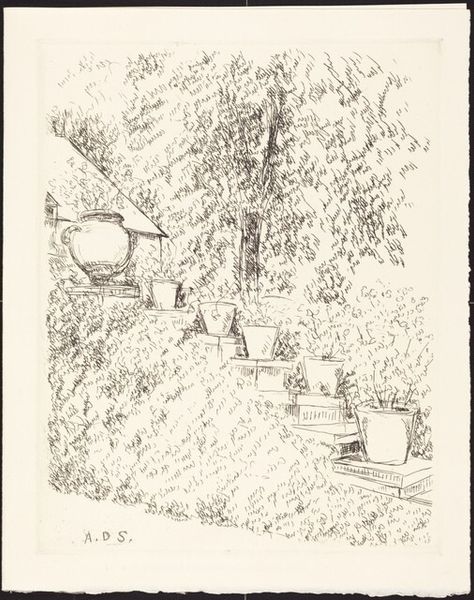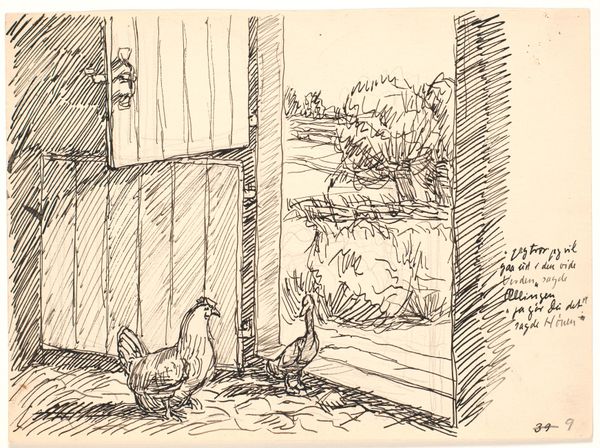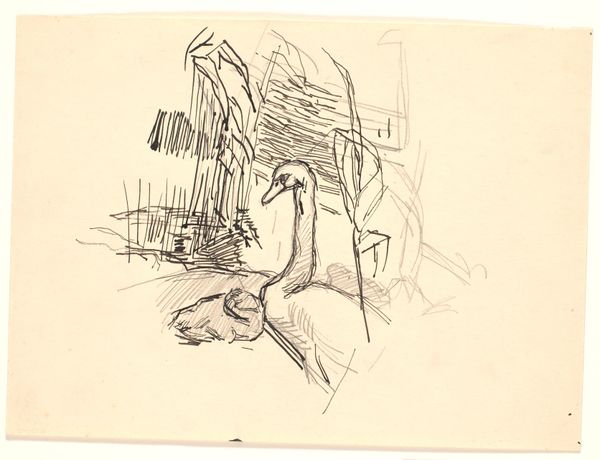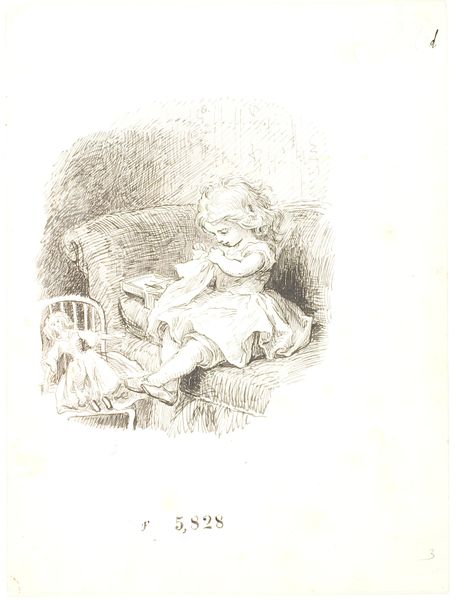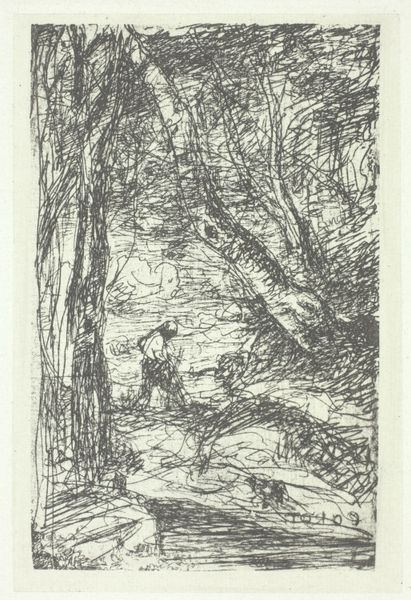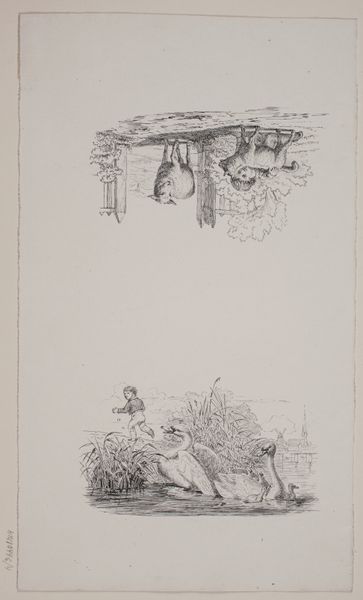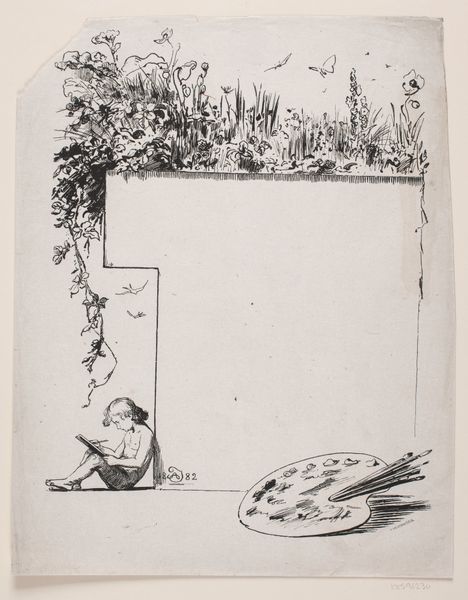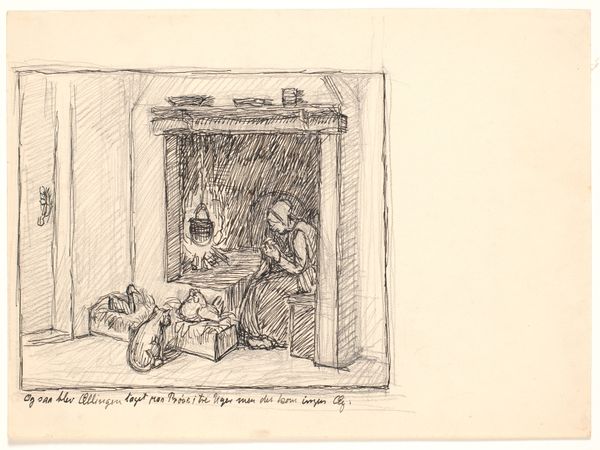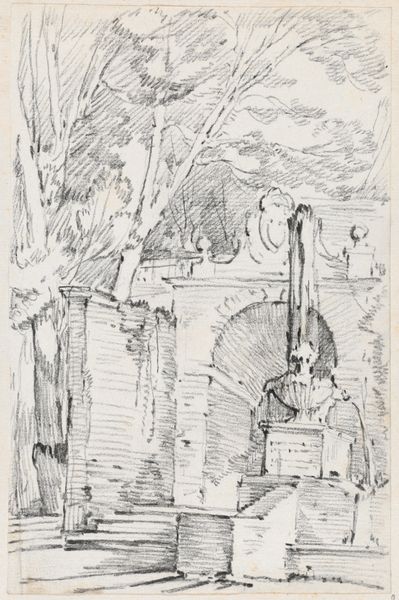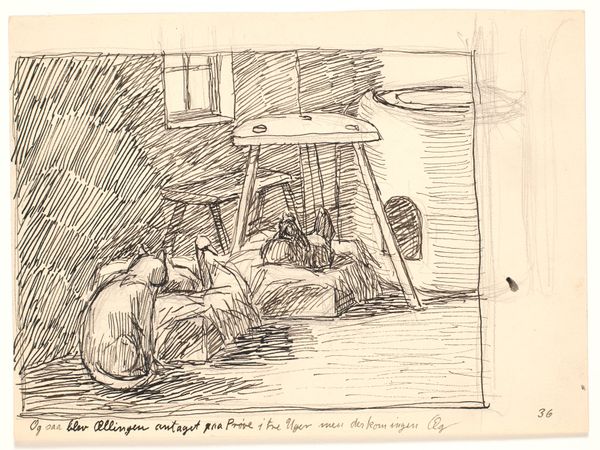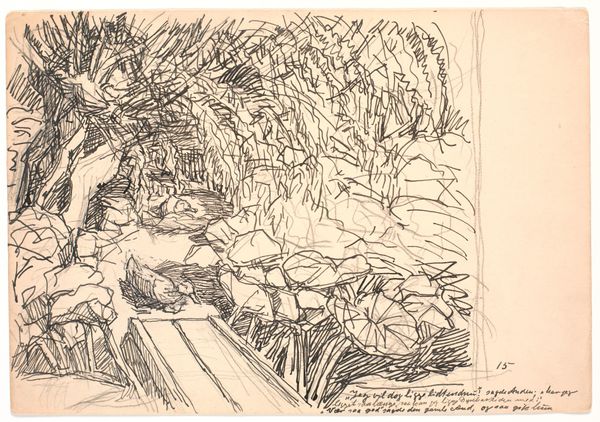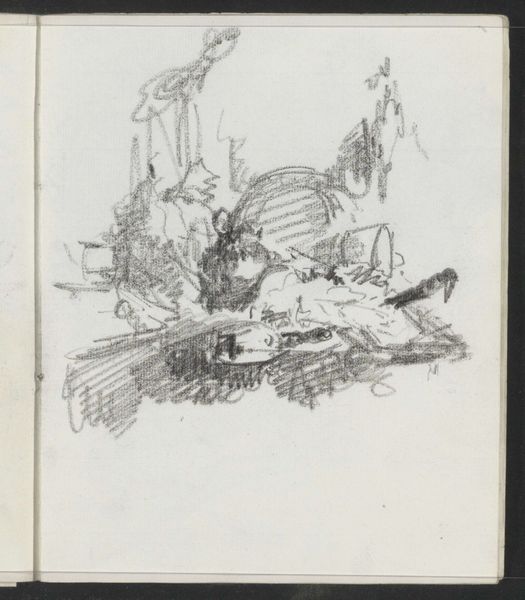
drawing, paper, ink, pen
#
drawing
#
narrative-art
#
etching
#
paper
#
ink
#
pen
#
genre-painting
Dimensions: 216 mm (height) x 161 mm (width) (bladmaal)
Curator: This delightful drawing, "Lili fodrer fugle," or "Lili Feeding Birds," was created in 1864 by Lorenz Frølich. It is rendered in pen and ink on paper, currently held at the SMK - Statens Museum for Kunst. What strikes you about it at first glance? Editor: It's the delicate line work and the overall sense of quiet intimacy. There's a captivating stillness in this scene; the light seems soft and muted despite the high contrast in the line art. The girl is positioned in such a way that the work emphasizes care and compassion towards nature, contrasting with some of the more militaristic pieces of art at that time. Curator: Precisely! Frølich, living in a Denmark shaped by significant socio-political upheaval after the Second Schleswig War, often explored themes of national identity, history and childhood within his art. The piece is part of a larger narrative; how might we unpack its message, in the light of Frølich’s career? Editor: The girl's gentle actions feel very poignant here. She's not just passively in nature; she's actively nurturing it, providing food for these little birds. Consider the rise of Romantic Nationalism; there is a desire to idealize simple, domestic scenes of kindness to distract the public's gaze from any other kind of labor. Curator: Indeed, and through that prism, consider the context: Denmark had just suffered defeat, ceding territory and influence. Works such as this turn inward, focusing on the private sphere, reflecting anxieties and perhaps aspirations about innocence. Frølich's genre scenes are also, in some ways, history paintings – history of the everyday. And consider the birds – potent symbols! Editor: That's insightful. Birds as symbols of freedom, peace... or perhaps even lost souls requiring sustenance after recent conflicts and wars. It’s so striking because these works operate within particular social constructions, specifically as it concerns the "acceptable" aesthetic, particularly in Denmark at that time. We can draw parallels between the position of a subjugated bird needing care, versus a subjugated population needing care from those in positions of political power. Curator: Precisely. Frølich channels contemporary sentiments through Lili and her relationship to nature in ways which resonate through art history even up until now, giving the piece relevance far beyond the personal narrative on the page. It serves as a visual document speaking to power and powerlessness at a particular cultural moment. Editor: Absolutely. What might initially seem like a charming, quiet image reveals itself to be deeply connected to its time and continues to inspire a deeper understanding about Danish social, historical and political identity even today.
Comments
No comments
Be the first to comment and join the conversation on the ultimate creative platform.
